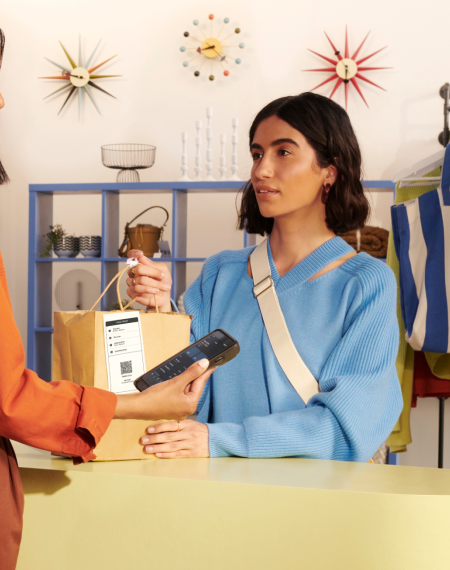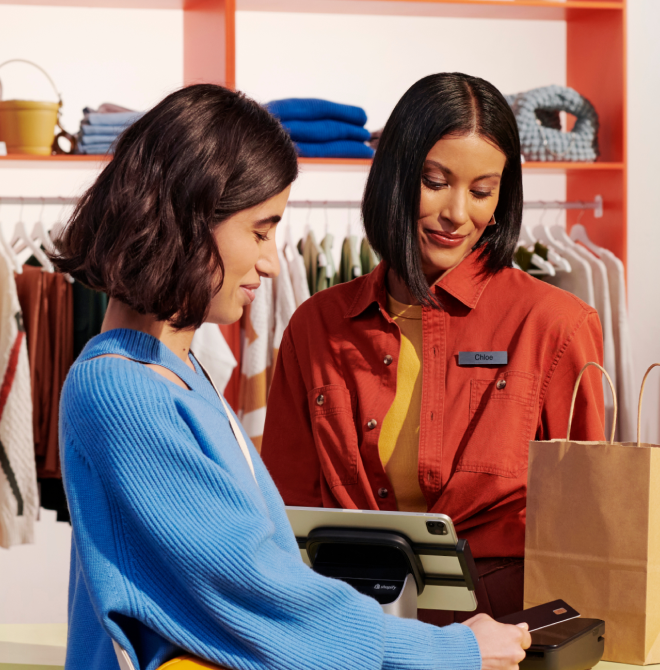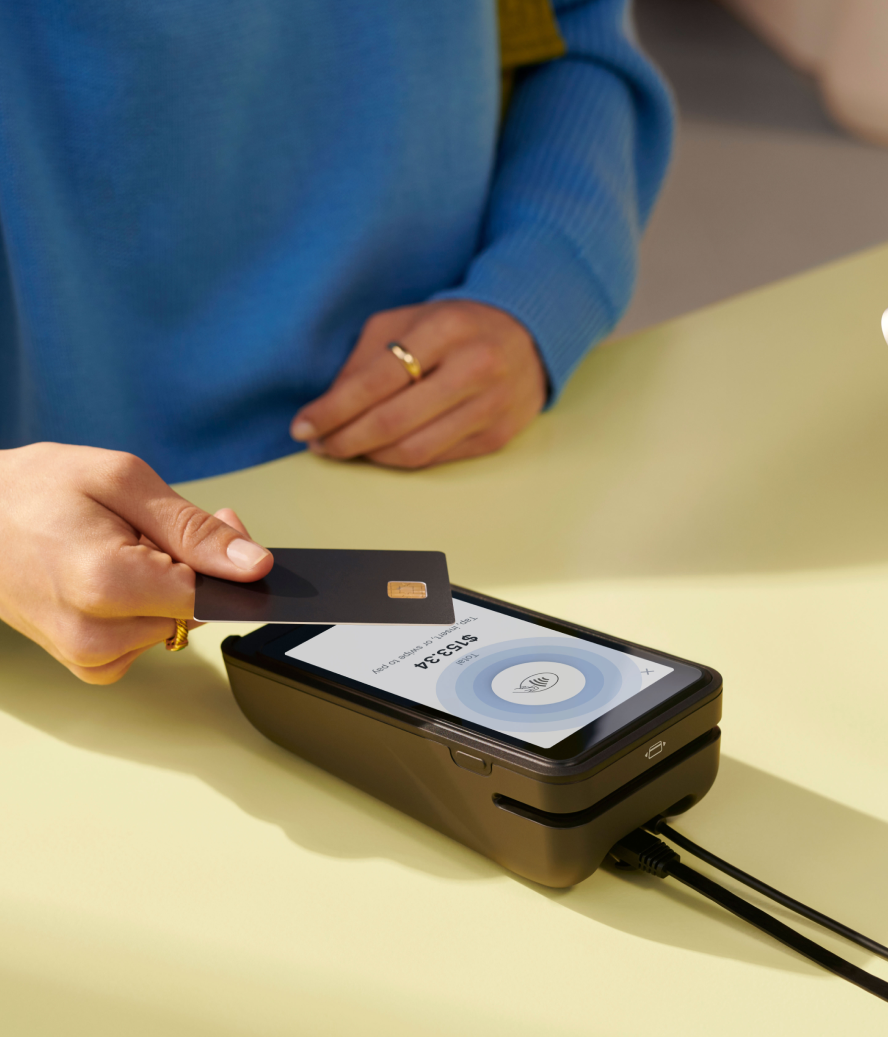Customers like Daniel (54, Florida) and Ankita (27, India) represent your diverse global audience. They differ in location, culture, age, gender, shopping preferences, currencies, and languages.
A one-size-fits-all approach ignores these crucial differences. The result? Missing out on up to 81% of online shoppers who expect a personalized shopping experience from the brands they engage with.
Geotargeting solves this challenge by delivering location-specific content and ads. Instead of generic messaging and campaigns, customers only see what's relevant to them based on their location.
This guide explores how geotargeting can help your business effectively reach customers without overextending your marketing budget.
What is geotargeting?
Geotargeting is a way to deliver different types of content that are customized to a website visitor’s location. You can specify how you communicate with customers based on where they’re located via ads, an invitation to a local in-person event, a customized email, or a push notification.
How geotargeting works in retail
Geotargeting works by first identifying where your customer is based. The traditional way is through IP addresses: the first three digits provide the country code, and the next ones provide specific areas within a country down to the state, city, and ZIP code. You can also determine a customer’s location through device ID, WiFi, and GPS signals.
Many ad platforms give the option to create location-based ads based on the location you identify. For example, Google Ads geotargeting lets you specify a location variable or set a geographic radius to display targeted ads—like around your retail store, for example.
Geotargeting vs. geofencing
Geofencing uses no specific consumer criteria, like behavioral patterns or country. All consumers who cross the location “fence” see the same ads.
Geotargeting takes geofencing a step further by factoring in shopper behavior, demographics, interests, and location. This makes the consumer experience more personalized and relevant.
For example, let’s say you’ve opened a sustainable clothing store in an up-and-coming area in your city. With geofencing, you can show ads to everyone who’s near your clothing shop. But with geotargeting, you target people near your location who also search for environment-friendly clothing brands.
Geotargeting vs. beacons
Both geofencing and geotargeting use location data, typically from your mobile device. Beacons, in contrast, are physical transmitters that detect when consumers are near, through a Bluetooth signal. They’re roughly the size of a standard Wi-Fi router.
Like geofencing, beacons stop targeting potential consumers once they move out of the predetermined geographical range. For example, suppose you set up a beacon inside your store. You can publish an ad featuring 20% off for a limited time for anyone entering the beacon range.
Benefits of geotargeting
Offer personalized experiences
Half of consumers say personalized offers and promotions from brands they’ve interacted with improve their shopping experience.
Geotargeting enhances personalization by showing ads based on location, purchase history, and demographics. You can customize content to fit specific stores, cultures, events, and seasonal products. Consider adding tags to customer profiles to create targeted mailing lists that engage similar customers more effectively.
Plus, with geotargeting, retailers can respond sensitively to local conditions and events. Content that reflects your customers' immediate environment and needs positions your brand as reliable and attuned to their world, creating memorable marketing experiences.
Increased shopper traffic
Because geotargeting helps you show the right message to the right shopper at the right time, it’s a great way to improve online traffic and foot traffic to your store.
Online traffic
Potential customers are more likely to stay and explore when they see content tailored to their needs. Target the right consumers based on their demographics, location, and shopping behavior to minimize wasted marketing efforts and maximize conversions.
Foot traffic
When someone searches for businesses like yours, you want to appear in local results. Local SEO boosts store visits by making your business visible to nearby searchers.
Share limited-time offers and exclusive deals with customers in your vicinity to drive offline sales. Optimize your website for local search terms, build location-specific pages, and maintain accurate business listings to attract nearby customers.
Gives your ad budget more miles
Stretch your ad budget further with geotargeting. While broad terms like "jewelry store" are expensive, specific long-tail keywords like "women's jewelry store in Austin" cost less and convert better. Your reach may be smaller, but you'll connect with people truly interested in your offerings through localized marketing campaigns.
Types of geotargeting
You can segment your customers using various parameters when geotargeting: past shopping behavior, location, or even the weather. You can use all three together or separately, depending on your goals.
Audience targeting
Audience targeting is the practice of separating consumers into segments based on traits such as:
- Demographics
- Interests
- Pain points
- Historical shopping behavior
- Loyalty program participation
Refer to your buyer personas when deciding which demographics to focus on when building your ads. But depending on your goals with audience targeting, you may need to modify your campaigns. Your ideal customer profile may not always align with the consumers you’re targeting for a specific campaign or product.
Location targeting
Imagine, as a customer, you receive an exciting invite for an in-store product launch event … only to discover that the store is five hours away. That would be a bummer, right?
Avoid this by using location targeting, which involves showing ads and other forms of content only to consumers who live within a specific geographical radius. With location targeting, you can show promotions, offers, and in-person invites only to relevant consumers.
💡Tip: Get detailed insight into where your inventory is with Shopify. It’s the only platform to natively unify POS and ecommerce on the same platform, so you get real-time insight into how much inventory you have across all locations—and never promote an out-of-stock product to local shoppers.
“I used to spend at least four hours manually counting inventory… but not anymore, because Shopify’s inventory system is so easy to manage,” says Mandalyn Renicker, owner of Offbeat Bikes.

Radius or proximity targeting
Reach nearby customers with radius targeting. This shows your ads to people within a certain distance from your store, like a mile or a few blocks away. It's great for telling people about sales, events or daily deals when they're close enough to visit.
For example, someone walking past your shop might see your ad for a special discount happening right now. You can set different messages based on how close people are, sending one message to people very close by and another to those a bit farther away.
Weather targeting
Weather influences how your customers behave and what they purchase. Think: cooler temperatures after a hot summer signal a need for cozy sweaters and slippers. Or an upcoming spring break trip might have some shoppers looking for a new bathing suit or pair of sunglasses.
Boost the efficiency of your campaigns with weather-targeted, local advertising. This is especially true if you sell seasonal-use products. Perhaps you launch a promotional campaign for umbrellas when it’s forecast to rain.
You can also customize your website based on the weather around your physical store if you’re looking at increasing foot traffic. If it is warm near your brick-and-mortar store, perhaps display summer clothing. In doing so, you reach out to customers who find your product relevant right now.
💡 Tip: Tools like Meteonomiqs can sync with your marketing efforts to automatically deliver weather-appropriate ads to users within specific locations.
How to run geotargeting campaigns
Geotargeting allows you to tailor your marketing campaigns based on your customers’ locations, helping you drive more foot traffic, boost in-store sales, and deliver personalized experiences. Here’s how to do it using Shopify’s built-in tools and integrations.
1. Collect customer data
Start by gathering first-party data from every customer interaction. With Shopify, this is built into the experience. Whether customers shop online, in person, or both, Shopify automatically captures data like:
- Purchase history
- Location data (from shipping addresses and POS interactions)
- On-site behavior and abandoned carts
- Loyalty program activity via apps like Marsello
To unify all this data, Shopify uses a unified customer profile, combining online and in-store interactions into a single view. This gives you everything you need to understand where your customers are and how they shop.
💡 Brands using unified profiles on Shopify have seen up to a 20% increase in order value.
2. Segment your audience
Next, use Shopify’s customer segmentation tools to create targeted lists based on geography. Two filters help you geotarget precisely:
- customer_within_distance: target customers located near a retail store or pop-up
- orders_placed: identify customers who’ve shopped at specific retail locations
You can combine these filters with other traits, like abandoned cart behavior or loyalty status, to build custom audiences. For example:
- Shoppers who live within 10 miles of your store and have only shopped online
- Loyal customers near a specific location who haven’t visited recently
- Locals with upcoming birthdays for exclusive event invites
💡Tip: Try pairing location filters with marketing automations in Shopify Flow to send timely, localized messages on autopilot.
3. Run retargeting ads
Once you’ve built your segments, turn them into high-performance ad campaigns using Shopify Audiences. This tool leverages Shopify’s commerce insights to help you create custom audience lists, exclude existing customers, and improve retargeting performance on Meta, Google, and TikTok.
Merchants using Shopify Audiences Retargeting Boost lists have seen up to:
- 2x more orders per ad dollar spent
- 50% lower customer acquisition costs
- 3.6x lower cost per purchase compared to traditional methods
💡Tip: Use Shopify Analytics to data to benchmark your results against similar stores and adjust your strategy over time.
Examples of geotargeting in retail
Shokz
Consumer electronics brand Shokz implemented Shopify to launch eight market-localized websites across North America, Japan, Europe, and Southeast Asia. Each site was designed with regional preferences in mind, using sports imagery for American and European markets while emphasizing technology details for Japanese customers.
By leveraging Launchpad for managing global peak buying seasons, Shokz created a seamless international shopping experience with personalized promotional pricing and currency localization for each regional market. The result? 80% growth in its customer database.
“Our business strives to offer customers a seamless online experience—from the moment they land on our site to when they checkout,” says Hemo Huang, the Shockz’ director of sales. “Shopify Plus empowers us to deliver personalized and effective experiences globally to keep our customers engaged.”
Glossier
Glossier partnered with the Shop app to create a location-specific product launch for their new Boy Brow Arch, placing scannable posters and billboards throughout New York, Chicago, and Los Angeles.
Using Shop app's geotargeting technology, only fans who physically located these posters could scan the QR code and gain early access to purchase the product, creating an exclusive treasure hunt experience.
The blend of physical and digital retail generated significant social media buzz and press coverage, with CMO Kleo Mack noting their goal was to "be disruptive, find a fresh way to bring a new brow product to the market, and generate engagement within our community."

Use geotargeting for your retail store
Geotargeting is an efficient way to increase traffic to your store (whether brick-and-mortar or online) and reach specific customers. It matches relevant content to the visitor, helps you get more high-quality traffic, and is a reliable way to experiment with copy based on location.
It’s a win-win for both sides: brands see an increase in sales, and consumers see more content that’s relevant to their lives.
Read more
- Hyper-Personalization: 4 Examples of Retailers Doing it Right
- What Retailers Can Learn From The Museum Of Ice Cream’s Sweet Success
- What is Visual Search: How Retailers Can Use it to Enhance the Customer Experience
- 10 Retail Experts Share Their #1 Tip for Marketing and Growing Your Store
- 5 Lessons Traditional Retailers Can Learn From DTC Brands
- 7+ Essential Snapchat Strategies the Retail Pros Use
- How to Make Your Product Copy More Persuasive
Geotargeting FAQ
What is an example of geotargeting?
A sustainable clothing store could show targeted ads to people who are near their location and also search for environment-friendly clothing brands. This combines both location data and consumer behavior to create more personalized and relevant marketing.
What is the difference between geofencing and geotargeting?
Geofencing uses only a set geographical area to show the same ads to everyone who crosses that location "fence," regardless of other factors. Geotargeting takes geofencing further by combining location data with shopper behavior, demographics, and interests to create more personalized marketing.
How effective is geotargeting?
Geotargeting can boost sales by creating personalized customer experiences that speak to specific needs based on location, purchase history, and demographics. Merchants using Shopify Audiences Retargeting Boost lists have seen up to 2x more orders per ad dollar spent and 50% lower customer acquisition costs.
What is geotargeting in SEO?
Local SEO, known as geotargeting, boosts store visits by making your business visible to nearby searchers. You can optimize your website for local search terms, build location-specific pages, and maintain accurate business listings to bring customers into your store.







